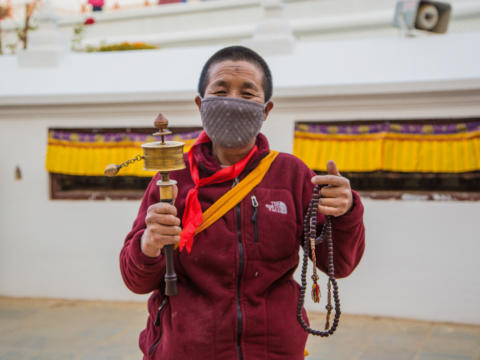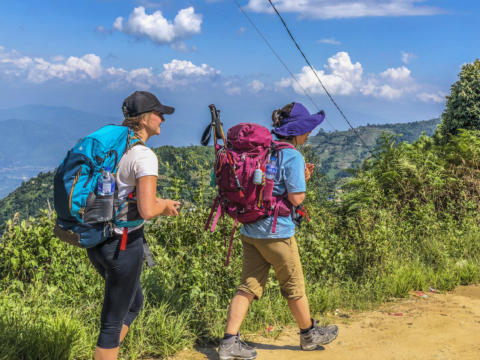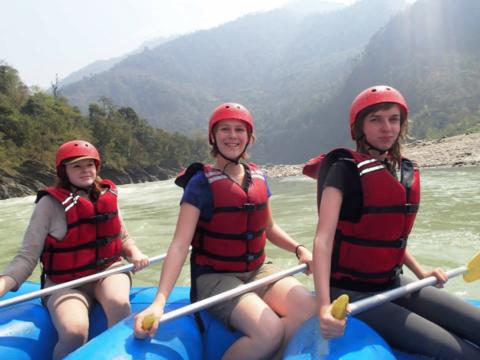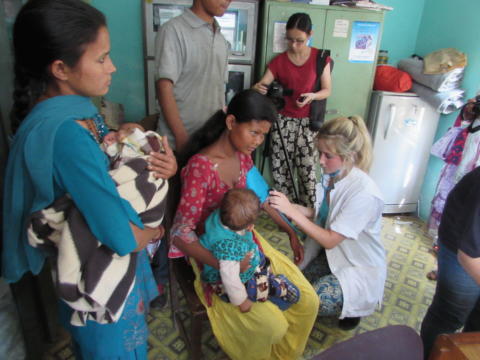Only 420€ per week!
Journalism Internship
Kathmandu Accommodation - Nepal
Gain comprehensive experience by working as an intern at Media Houses in Kathmandu, Nepal.
This program will give you valuable experience to learn about journalism practices in Nepal while living in the beautiful city of Kathmandu. The internship will take place in private or community media houses (Newspaper, Radio, online media) located in and around Kathmandu. This program is focused on students of mass communication and journalism.
Program Description
Journalism is a discipline of collecting, analyzing, verifying and presenting news regarding current events, trends, trends, issues and people. It is sometimes described as the first draft of History because journalists are the first persons to often record important events while producing news articles on short deadlines.
During your internship, you will spend your time with the experts at Media Houses in Kathmandu. And you will also get to observe the tasks done by the Journalists in their day to day life. You will also be called upon to assist Journalists when required. You may have to work with several Departments in the Media Houses such as reporting, writing, editing and field observation.
The task of the interns is to focus on writing, editing and field observation where you will be able to shrill your knowledge and skills in a practical work environment.
Cultural Introduction
The first week of your internship is composed of an introduction to the local culture, customs, dos and don’ts. This week will get you kickstarted into this amazing country located at the foothills of the mighty Himalayas. Not only will you get to learn about the language and lifestyle, but you will also visit see the city and will learn to get around the place on your own.
During the first 3 days from Monday to Wednesday, you will get to know the life and style of Nepal and learn what to expect during your internship. Your internship coordinator will show you around the city and will give you tips and tricks you must know when in Nepal.
From Thursday to Friday on your first week, you will receive an academic introduction session before the internship. During these sessions, a professional supervisor will educate you about the local situation and developments surrounding the industry/field in which the internship takes place and prepares the intern for the local work environment/culture.
What’s included
- Guaranteed internship placement with an assigned project and a professional work environment
- Guaranteed English language speaking person in the working environment plus a local language when applicable
- Pre-internship personal learning goal and competencies assessment
- Guidance, Supervision and on the job training
- Guaranteed 25+ working hours per week
- Frequent (bi-weekly/monthly) feedback and progress sessions with the hosting company/organization
- A physical workplace for the intern
- Welcome and pick-up at the airport
- Accommodation close to the workplace with a comfortable environment
- A mandatory introduction week consisting of an intro into the local culture and customs as well as an introduction into the internship placement
- Meals provided (Please check the location description for more information)
- 24-hour local support
Aims & Objectives
Career development for young individuals, by applying and progressing their skills in a foreign working environment.
Schedule
Monday to Friday
Daily working hours will be 3- 4 hours from Monday to Friday. Your assignments will be given to you upon arrival. Your daily tasks may vary depending on the organization you work at and your supervisor will guide you throughout the process.
Note: This schedule can be changed and/or amended depending on weather conditions, local conditions and unforeseen circumstances.
Participant Criteria & Requirements
Standard Requirements
Minimum age: 18
Maximum age: –
Minimum English level: Advanced
CRB required: On Signup
Passport copy required: On Signup
Resume copy required: On Signup
Required qualification: Academic qualifications in Journalism
Additional Requirements
- An established background in an affiliated field of study
- A reference letter authorized by your university or you are presently working/studying at.
- Proof of qualifications and CV/Resume and a copy of your passport sent by email to the local team at least four weeks before beginning the internship
- Motivation letter including learning goals, expectations and specific placement requests from the intern
- Copies of certificates of qualifications and academic transcripts
Additional Equipment
- Laptop
- Casual dress is appropriate during your internship. However, no-see through clothes or low cut tops are permitted
Location
Kathmandu, the capital and largest city in Nepal, is like no other city in the world. The decaying buildings in the heart of the city are a contrast to the lively atmosphere that permeates the streets. The smell of incense wafts from the stores while street sellers push their wares, and people go about their daily lives, all against a backdrop of historic temples and carved statues.
For several hundred years, Kathmandu was one of three rival royal cities, along with Bhaktapur and Patan. Situated in close proximity to each other, today these three almost run together. The highlight of Kathmandu has long been Durbar Square, the largest of the palace squares in the three royal cities and a UNESCO World Heritage Site. Temples and monuments of varying shapes, sizes, styles, and faiths can be found here.
For most visitors to Nepal, Kathmandu Valley is the arrival point and the primary focus of the visit. This small, mountain-sheltered valley is the historical center of Nepal, a place where kingdoms rose and fell, where palaces and temples were built and rebuilt, and where Nepali art and culture was developed and refined. Rivers and streams interlace with the landscape, the brick-red villages cling to ridges to preserve precious land and even from the bustling centers of each of the cities, it is possible to catch a glimpse of the snow-capped peaks of the majestic Himalayas against the intense blue skies.
About the Accommodation
There is a mini library where you can read, a beautiful garden to relax in, dining and lounge areas where you can hang out with fellow participants and a working space. Furthermore, there is a refrigerator which you are welcome to use to store food and beverages.
Food Arrangements
You will be provided with breakfast everyday.
Facilities
Our house is located five kilometers away from the city center, where you can find anything you might need. The nearest ATM and supermarket are located a 15-minute walk away from our accommodation.
Activities & Events
No scheduled activities outside the program.
Sights & Surroundings
Shopping in Kathmandu is an experience in itself. Thamel, Kathmandu tourist hotspot, is where shoppers can find Nepalese, Tibetan and Indian artifacts, wood carvings, handicraft and an assortment of unique clothing and apparel. There are also several malls where you can find fashionable clothing and grocery stores offering everything from wine to breakfast cereals. There are numerous dining options available throughout the city, including Italian, Indian, Thai, Korean and Chinese in addition to a variety of local cuisine.
Transportation
From this location we do not provide free transport to other locations.
Quick Facts
Name: Federal Democratic Republic of Nepal
Population: 28.98 million
Capital: Kathmandu
Language: Nepali
Currency: Nepalese rupee (NPR)
Time zone: UTC +5:45
Country Information
Namaste and welcome to Nepal, a country of high Himalayan Mountains, artistic monuments, exotic wildlife, and diverse cultures. Located between 80 12' east longitude and between 26 22' and 30 27' north latitude, Nepal extends along the south slopes of the Himalayas in central Asia.
Although Nepal is small, it has the greatest latitudinal variation of any country. The land rises from the southern plains of the Terai, barely above sea level at 70 meters, to the top of the Mt. Everest, the highest peak on Earth at 8848 meters above sea level, in a distance of less than 200 km.
Climate
Weather conditions in Nepal vary from region to region. Summer and late spring temperatures range from about 28C in the hill region of the country to more than 40C in the Terai. In the winter, the average maximum and minimum temperatures in the Terai range from a brisk 7C to mild 23C. The central valleys experience a minimum temperature often falling below the freezing point and a chilly 12C maximum. Much colder temperatures prevail at higher elevations. The Kathmandu Valley has a mild climate, ranging from 19 to 27C in the summer and 2 to 20C in the winter. In the winter, it only snows in the high elevations, around 9,000 feet. In the highest elevations, it snows year-round. The monsoon can last from mid-June to mid-August although the majority of the rain arrives in July.
Winter: From December to February, the mornings and evenings will be cold; in the daytime, you will be fine with a sweater or thin jacket.
Spring: From March to May is the best time to be in Nepal as it is neither hot nor cold. However, it does get quite windy.
Summer: June to August. Hot, humid and monsoon season.
Fall: Very pleasant and mild weather. It gets a bit windy but you will be fine with a sweater or a jacket.
Culture
Nepal's many ethnic groups are as varied as its land with their own languages and cultures. A wide variety of ethnic groups occupy the mid-hills. In the Kathmandu Valley the major population that we find is Newars, whose culture and artistry have earned them an international reputation. The Sherpas are known as tough mountain climbers. Brahmins and Chhetris are scattered over the hills and valleys, and Tamangs are found in the districts around the Kathmandu Valley. The Rais, Limbu, Gurung, Magars of the mid-hills have earned fame as Gurkha soldiers. Lowland ethnic groups such as Maithili, Bhojpuri, and Tharu enhance the colorful mosaic. The population of Nepal is about 28.98 million.
Transportation
Local Bus
One of the cheapest ways to get around Nepal. However, you get what you pay for! They are often crowded (and not just with people, sometimes even goats!). Most buses don’t depart until they get filled up, so it is not a good idea for those who have a tight schedule.
Tourist Bus
These are slightly more expensive than local buses but also more comfortable. Greenline buses offer routers between Kathmandu, Chitwan, Lumbini and Pokhara. It is recommended to book in advance to make sure you get a seat.
Taxis
Taxis are either private taxis as in any other cities or “10 Rupee” taxis, which are public. This means they don’t leave a place until they are full. The name, “10 Rupee taxis” does not mean they cost 10 Rupee! Do feel free to bargain





